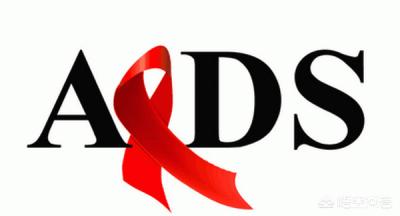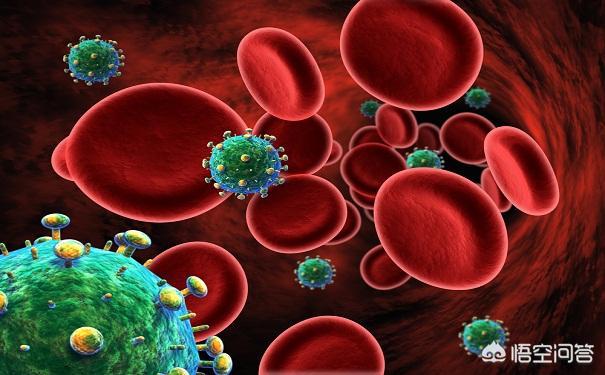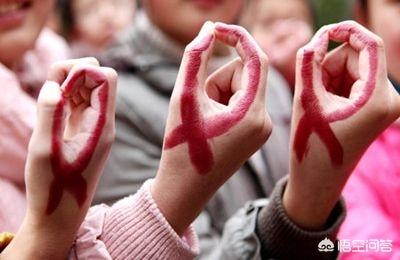How can I protect myself from HIV?
Why does love arise from color, and why is color created for love. Unfortunately, what comes with love is not only love, but also disease. For example, "AIDS".

AIDS, known as Acquired Immunodeficiency Syndrome (AIDS), is a Sexually Transmitted Disease (STD) characterized by severe immunodeficiency caused by Human Immunodeficiency Virus (HIV) infection.
This disease starts with systemic symptoms such as enlarged lymph nodes, anorexia, chronic diarrhea, weight loss, fever, malaise, etc., and gradually progresses to various opportunistic infections, secondary tumors, etc. and death.
How can I protect myself from HIV?
Know your enemy and know yourself, and you will be able to win a hundred battles. In order to overcome the disease and not to have the disease. We first need to understand the disease.
Three conditions are necessary for infectious diseases: the source of infection, the means of transmission and the susceptible population. How to prevent infectious diseases, isolate the source of infection, cut off the means of transmission and protect susceptible people.
Thankfully, we don't have to be as hostile as we are when faced with a person with "AIDS", because AIDS is not contagious through normal life contacts, such as: shaking hands, hugging, eating together, working together, lying down, coughing, public bathrooms, public baths, mosquito bites. Normal care for HIV-infected or AIDS patients is also not contagious.
What are the main routes of HIV transmission?

Sexual transmission (anal sex is the greatest risk); blood-to-blood transmission (blood contamination, sharing needles for drug use, etc.); and mother-to-child transmission (from mother to baby).
Here's what you need to be aware of: HIV is present in the body fluids of infected people, including blood, semen, breast milk, vaginal secretions, amniotic and cervical fluids, and pus.
And blood transfusion has the greatest risk of infection, higher than 90%.
Although HIV is also found in tears and saliva, they are not infectious because of their low levels (no relevant cases have been reported). Feces, snot, sputum, sweat, urine, and vomit are not infectious. Intact skin contact with body fluids, etc. that contain HIV is not infectious. The probability of infection after contact with mucosal surfaces is 0.09%.
AIDS is not yet curable, vaccine research has not yet been successful, and the efforts of scientists are still needed, so the key to preventing AIDS lies in changing high-risk behaviors.
How to prevent AIDS?
1. Popularize knowledge of AIDS prevention and establish healthy sexual attitudes.

2. Ensure a safe blood supply, popularize non-remunerated blood donation, and screen blood donors for HIV to prevent the transmission of HIV through blood products.
3. No drug use or sharing of needles; sharing of needles and syringes by intravenous drug addicts is prohibited.
4. HIV-infected women with pregnancy requirements are currently offered antiretroviral therapy and mother-to-child blocking techniques. Studies have concluded that comprehensive interventions can effectively reduce the risk of mother-to-child transmission of HIV, reducing the rate of mother-to-child transmission of HIV to 1 per cent in developed countries and from 40 per cent to 2 per cent in resource-limited countries or regions. Because HIV is present in the milk of HIV-infected mothers, breastfeeding can result in vertical transmission of HIV. Therefore, HIV-infected mothers should avoid breastfeeding as much as possible. If artificial feeding alone is not available, mothers need to be on ART throughout the breastfeeding period and avoid mixed feeding of breast milk and milk replacer.
5. Advocating safe sex, promoting the correct use of condoms, adopting safe sex and avoiding anal sex.

6. If HIV exposure is determined, the risk should be fully assessed and anti-HIV treatment should be instituted under a doctor's supervision within 72 hours, although the earlier the better.
The world of flowers and butterflies. AIDS prevention is everyone's responsibility.
([Dr. Fu Hong] is a signed author of Wukong Q&A, this is an original article, first published in today's headlines Wukong Q&A, pictures from the network, not for commercial use! Disclaimer: The content of this article is for reference only, not for diagnosis, medication and the use of the basis, can not replace the diagnosis, treatment and recommendations of doctors and other medical personnel, if you are not feeling well, please consult a doctor in a timely manner.)
I worked in an AIDS screening lab for a year, and AIDS is transmitted in three main ways, sexually, through blood, and from mother to child.
1. The most common form of sexual transmission is xxoo, of which roughly 80 to 85 percent is between men and men.
A lot of homosexuals are underground, the relationship is not stable enough, there may be this time with A, the next time with B, but also may find homosexual netizens temporary dating, especially easy to cross-infection, one infected with AIDS, no security measures, or security measures are not in place to break, the other will be infected, and the probability of infection is greatly enhanced.
Another part of it is from going out to prostitutes, getting infected, not knowing it, and infecting your wife.
2, AIDS is a disease with a very high death rate, there is no cure for the special drugs and methods, infected away from the Marx that report, just a matter of time. But we can prevent it, preventing it before it happens.
3. Daily work and ordinary contact with AIDS patients will not lead to AIDS infection.
4. Self-cleansing and keeping one sexual partner is a fundamental measure to prevent sexually transmitted infections.
5, not only between men and women need to use TT, men and men also need, condoms can not only contraception, can reduce the risk of infection of AIDS, sexually transmitted diseases.
6. Sharing syringes for drug use is an important way of spreading AIDS, so it is important to refuse drugs and cherish life.
7. Blood cannot be sold privately, and the State now promotes voluntary blood donation, on the one hand, to enhance the quality of the blood source, and at the same time, to increase efforts to detect all kinds of pathogens in the blood, so as to minimize the risk of transmission of blood transfusion.
8. There is a window period for HIV testing, i.e., the period during which the virus has been infected and cannot yet be detected. If you donate blood during the window period, it is very dangerous for those who need blood transfusion. As long as it is not a case of not being able to live without the transfusion, for the icing on the cake, it is better to have a transfusion, and for those who can hold out without it, they don't have a transfusion.
9, some economic conditions are not good place, there will be a village share a glass syringe, used up with saline or alcohol bubble, the virus to be so fragile, the bubble can die, the world has long conquered the virus infection. Disposable syringes should be used, which is safer.
Do not look for someone outside of your marriage partner who has contracted HIV from transactional sex.
Do not get sick and do not use drugs, as injections and blood draws are prone to HIV infection.
No haircuts and no trauma, as broken skin is susceptible to AIDS.
Not born, due to mother-to-child transmission of AIDS.
HIV is transmitted sexually, through blood, and from mother to child.
To prevent AIDS, let us first talk about sexual transmission. Sexual transmission is an infection that occurs when the mucous membrane surfaces of the reproductive organs are microscopically damaged during sexual intercourse, allowing the HIV virus to enter the body.
How to prevent it, refuse unclean intercourse, be clean and not promiscuous. Maintain the purity of your marriage. Use condoms correctly and minimize direct contact with sex organs. In recent years, there are more male GG infected with AIDS, because sexual behavior goes anal, and anal folds are easy to break, plus multiple sexual partners, very easy to be infected.
How to prevent blood transmission, go to regular hospitals for transfusions, blood donations, surgeries, etc. Refuse drugs and do not share needles and instruments to prevent cross-infection. A few years ago, an AIDS village appeared, and it was said that people there often sold blood and went to underground black trading points. Needles were not sterilized and were used in different ways, resulting in many people being infected with HIV. Therefore, it is very important to go to a regular hospital to donate blood for transfusion and surgery.
There are also drug users who share needles, needle tiles, and cross-contaminate each other.
Mother-to-child transmission occurs when a mother who is HIV-positive or carriers transmits the disease to her child through the umbilical cord, childbirth, and breastfeeding, so if you have AIDS, don't have any more children.
You can't get infected by daily contact with an AIDS patient, but you should avoid skin wounds, blood contact and unclean sex.
Cherish life and stay away from drugs and AIDS.
Doubts about how AIDS is transmitted?
Took the time to read all of the above articles. They are all well written! However, none of their answers explain the problems that exist in this population with unknown transmission routes!
I am also from the Center for Disease Control and Prevention (CDC) and am currently retired. I have been engaged in HIV prevention and high-risk intervention work for 12 years, and in the course of my work, I have found a total of two cases of infected persons for whom no means of transmission could be found!
I have consulted the Internet for authoritative information on this subject, but I only know that there is a group of people whose transmission route is not known, and I cannot give a reasonable explanation! Among AIDS patients and infected persons, those with unknown transmission routes account for about 1% to 2% of the total! That's a sizable number. The infected people I've talked to have only one thing in common: they've been living together for a long time with an infected person who has AIDS in their family! This gives me reason to suspect that there must be other ways of spreading AIDS that are just not currently understood! I remain silent on the question of whether or not you can get AIDS from eating together in China! If you are interested in this issue, you can go to the Internet and search for my previously published articles to read them, which may help you! Because the number of cases contacted is too small to say much! If my article helps you, it fulfills the purpose of my writing the above article!
The biology teacher will answer it!
AIDS, known as Acquired Immune Deficiency Syndrome, is a disease of the immune system caused by infection with the AIDS virus.
The immune system is like a nation's army, playing a defensive role externally and a monitoring and cleaning role internally. Once HIV enters the human body, it attacks the body's immune cells, thus causing the immune system to collapse.
Therefore, some AIDS patients will die of various infections and some will die of various tumors. Moreover, there is no effective treatment for AIDS other than cocktail therapy, so prevention is more important than treatment in the case of AIDS.
To prevent AIDS, we need to know how it is transmitted, and any infectious disease can be effectively prevented by cutting off the means of transmission. There are three ways of spreading AIDS: mother-to-child transmission, blood transmission and sexual transmission. Therefore, AIDS can be prevented from the following three angles:
First: mother-to-child transmission.
If the mother is infected with HIV, then it can be transmitted to the baby during labor and delivery. The good thing is that nowadays medical technology can effectively block it, so if the mother effectively blocks it during pregnancy and delivery, this transmission route can be cut off.
Second: blood transmission.
The blood of an HIV-infected person contains a large amount of the virus, and it is possible to be infected if you come into contact with the blood of an infected person. Therefore, if you need a blood transfusion, you must go through the regular hospitals, the regular hospitals blood are from the blood station, will go through the AIDS test. Individuals should never sell blood through underground black blood stations. In the past, there were some villages where the entire village was infected with HIV because of selling blood in underground black blood stations. In life, we should also avoid sharing razors and eyebrow tattooing tools with others, especially not sharing syringes with others, as many drug addicts share syringes with others, which can be easily infected.
Third: Sexual transmission.
The semen and other body fluids of HIV-infected people contain a large number of viruses, so if you have sex with an infected person, you may be infected, so you have to avoid having sex with sex workers in your life. Moreover, information shows that the rate of HIV infection in colleges and universities has increased in recent years, and the main way of transmission is through male-to-male relationships. The special way of sexual intercourse between gay men and the sexual relationship which is not easy to be regulated are more likely to spread AIDS. Therefore, the main way to prevent HIV infection is to avoid sexual intercourse in general.
These are effective ways of preventing AIDS, but even if you are careful, there is still a risk of infection, such as the other day when I read on the Internet that a doctor had punctured his finger during an operation on an AIDS patient. In this case, there are also emergency measures to prevent infection. There are now AIDS-blocking drugs, which can block the replication of the virus within 72 hours, so if you accidentally come into contact with the virus, you must go to an epidemic prevention station to get the drugs quickly, within 72 hours. If it is not available locally, even by air, you must quickly go to an epidemic prevention station in a big city to get it; it will be useless after 72 hours.
How can I protect myself from HIV?
1. Foreword on AIDS
In fact, this is a clichéd issue. Since AIDS was discovered in China and began to spread, stories and legends about AIDS have been on the rise, and AIDS patients are even more revered, and everyone talks about AIDS.
In fact, AIDS is also just one of the many infectious diseases, we walk into the AIDS together, only to know the enemy to know a hundred battles, so we go together to unveil the mystery of AIDS.
2. What is AIDS?
The full name of AIDS is Acquired Immune Deficiency Syndrome (AIDS), also known as AIDS. AIDS is a very harmful infectious disease, caused by infection of the AIDS virus (HIV virus). HIV virus can take the most important CD4T lymphocytes in the body's immune system as the main target of attack, a large number of destruction of the cells, so that the body loses its immune function, so the body is easy to infect a variety of diseases, and can be complicated by malignant tumors. The disease has a high mortality rate, and the incubation period of HIV in the human body is 8 to 9 years on average. Before AIDS, one can live and work without any symptoms for many years, making it difficult to recognize, and once the disease develops, it will be difficult to control.
3. Conditions of transmission of infectious diseases
As with all infectious diseases, the three conditions of a source of infection, a means of transmission and a susceptible population must all be present for the disease to spread. As with other infectious diseases, we can organize the spread of AIDS by isolating the source of infection, cutting off the means of transmission and protecting vulnerable groups.
4. What are the main routes of transmission of AIDS?
Sexual, blood-borne and mother-to-child transmission are the main routes of HIV transmission.
And normal life contact does not transmit HIV, such as shaking hands, hugging, eating and working together, using public bathroom baths, mosquito bites and so on also do not have the ability to spread, and normal care of HIV-infected people or people with AIDS, will not be infectious. HIV is present in the body fluids of HIV-infected patients, including blood, semen, breast milk, vaginal secretions, amniotic fluid and cervical secretions, pus, etc. HIV is also present in tears and saliva, but because of the small amount, and thus not infectious. Feces, snot, sputum, sweat, urine, and vomit of HIV patients are not infectious.
5. How can we prevent and protect ourselves from being infected by HIV?
First, there is no possibility of infection without a source of infection, so if there is no AIDS around us, then we certainly will not be transmitted AIDS, but the fact is that there is really around us, so we need to start with the means of transmission and susceptible people to avoid contracting AIDS.
Secondly, now that we understand that the main modes of transmission of AIDS are sexual transmission, blood transmission and mother-to-child transmission, we need to avoid the following behaviors in order to avoid being infected with AIDS.
a. Safe sex requires us to establish healthy sexual concepts, reduce the number of sexual partners and reduce same-sex sex, promote the correct use of condoms, adopt safe sex and avoid anal sex, which can greatly reduce the possibility of HIV infection.
b. Ensure safe blood contact, whether donating or receiving blood, strict screening for AIDS, and scientific blood donation and receipt to prevent transmission of HIV through blood products. and the sharing of needles, needles and syringes by drug users is also a common cause of blood transmission.
c. Mother-to-child interruption to avoid transmission of HIV to the next generation: HIV-infected women should avoid pregnancy and, if pregnant, should refrain from breastfeeding the babies they give birth to.
6. What should I do if HIV exposure is determined?
What should we do once we suspect HIV exposure? Risks should be adequately assessed and occupational exposures should be treated formally and within 72 hours, and the sooner the better, with anti-HIV treatment under the guidance of an occupational disease prevention specialist.
There is no cure for HIV, which is one of the reasons why talk of HIV is so common, so the scientific prevention of HIV infection is the best protection we can do.
Nowadays, it's basically sexually transmitted, and blood donations are strictly regulated, so it's rare that it's transmitted by blood donations. And it's not spread by normal life. So, just be clean, and if you can't control yourself, wear a condom, wear a condom!
From the first discovery and confirmation of AIDS in the United States in 1981, to now just 30 years, the rate of HIV positive detection has been many times more than the initial, due to the long incubation period of AIDS (an average of 12-13 years), so it is not easy to be detected in the early stages of the infection, and often later due to the immune system caused by a decline in other diseases (colds, lung diseases, unexplained fever, digestive tract disease) Even malignant tumors) are diagnosed. AIDS is an infectious disease and we need to understand how it is transmitted in order to prevent it.

1. Blood transmission, HIV can be transmitted through blood contact, such as the sharing of needles by drug addicts, transfusion of blood from unknown sources and so on, all of which may be infected with HIV. Therefore, we should firstly eliminate bad habits and behaviors, and if we need blood transfusion for treatment, we must receive blood from a regular and clear source.
2. Mother-to-child transmission (MTCT) refers to the transmission of the virus from a pregnant woman who is already living with AIDS to her baby through the placenta, delivery or breastfeeding before, during or while breastfeeding. In this case, firstly, the patient has the right to terminate the pregnancy; secondly, antiretroviral drugs and alternative breastfeeding can minimize the risk of mother-to-child transmission.
3. Sexual transmission, with the changes in modern life, people's acceptance of new things is also increasing, many people have unsafe sex life, such as sexual promiscuity, do not take protective measures, etc., will increase the chance of infection. Therefore, it is important to take safety measures when having sex, such as: bringing contraception, and so on.

In addition, life such as shaking hands, hugging, eating together, mosquito bites or coughing and sneezing do not transmit HIV. So there is no need to be overly afraid of AIDS.
Respondent: Changxiao Chen, M.S., M.A.
Welcome to Life Calling for more useful health knowledge.
There are millions of ways to kill in the world, but no matter which way is used, the purpose is to put the other party to death. Any act that objectively aims at the ultimate death of the target or directly causes the death of the target is homicide and should be regarded as a murderer. Admittedly, it is undoubtedly an act of murder to knowingly infect oneself with the AIDS virus and then maliciously transmit the virus to others through sexual intercourse or other means! As of now, HIV is basically the equivalent of a "death notice", even more brutal than a sharp blade. When someone deliberately uses it to end another person's life, what is it if not murder?
Recently, the "AIDS malicious transmission" incidents have occurred repeatedly, a man in Shandong Province, infected with HIV, in the middle stage of the disease, but he did not treat it properly, through subterfuge actresses to malicious transmission. In the UK, an HIV-infected person deliberately concealed his status as an infected person and had unsafe sex with many people, and was eventually discovered and caught, and was eventually sentenced to seven years in prison. Not long ago, an article on CCTV.com titled "Man infects college students with HIV: Can't just be angry" was released, and the shocking reality of HIV has drawn the public's attention.
AIDS, also known as Acquired Immunodeficiency Syndrome, is an acquired immunodeficiency syndrome, an infectious disease characterized by immune system damage due to infection with the AIDS virus (HIV), and has a high mortality rate; it is incurable and there is no vaccine. It is incurable, has no vaccine, and once infected, the virus cannot be cleared for the rest of one's life and requires lifelong treatment.
AIDS, which was discovered in the 1990s, and the first case of AIDS infection was diagnosed independently in China in 1987, has so far infected more than 700,000 people, and those infected through sexual transmission have accounted for 95%.
There are still many people who have never been tested for HIV counseling. Some infected people learn that they are HIV-infected only after they have already been hospitalized with symptoms (opportunistic infections, tumors, etc.) at the stage of AIDS.
So, just how do we protect ourselves from HIV?
First of all, one has to understand how AIDS is transmitted:
l Blood-borne: HIV-contaminated blood; sharing of HIV-contaminated needles, syringes or other sharp instruments.
l Mother-to-child transmission: from HIV-infected mothers to their infants during pregnancy, childbirth and breastfeeding.
l Risky sexual behavior: HIV is transmitted through unprotected sexual intercourse (vaginal or anal) and oral sex with an infected person.
Secondly, it is important to pay attention to people who are at high risk of infection:
l Sex workers
l Men who have sex with men
l Injecting drug users
l Prisoners
Again, risk factors for HIV infection are to be avoided:
l Occurrence of unprotected anal or vaginal intercourse;
l Have been infected with other sexually transmitted diseases such as syphilis, herpes, chlamydia, gonorrhea and bacterial vaginitis;
l Sharing of contaminated needles, syringes and other injecting equipment and pharmaceutical injections when injecting drug use;
l Receiving unsafe injections, blood transfusions, tissue transplants and inadequately sterilized medical procedures for cutting or puncturing;
l Inadvertent needlestick injuries to medical personnel, etc.
HIV infection is governed by a number of factors, none of which can be ignored as valid reference data. The most critical and decisive factor is the viral load of the source of infection (the carrier), followed by the type of contact with bodily fluids and the mode of infection. In order of probability, this is roughly the case:
High disease load > Low disease load Endocrine body fluids > Exocrine body fluids Wound or mucous membrane contact > Skin contact
Therefore, cutting off the means of transmission and taking the initiative to test are effective ways to maximize protection against HIV infection. Cutting off the means of transmission means cutting off the three means of transmission of HIV infection (sexual transmission, blood transmission, and mother-to-child transmission) and doing so:
① Strengthen education on sexual morality, and strictly prohibit prostitution, whoring and other unclean sexual activities.
② Strengthen the management of blood products, strict inspection of blood products; strictly prohibit the injection of drugs; promote disposable medical supplies, the patient used items and medical equipment should be strictly disinfected to prevent the spread of medical transmission.
(iii) Marriage and pregnancy are not promoted for AIDS patients and HIV-infected persons.
Clear testing is the only way to know the status of HIV infection. Advocating the use of testing to know one's infection status, and then taking treatment and preventive measures, will help to control AIDS, share a healthy life, and contribute to the building of a healthy China.
This question and answer are from the site users, does not represent the position of the site, such as infringement, please contact the administrator to delete.